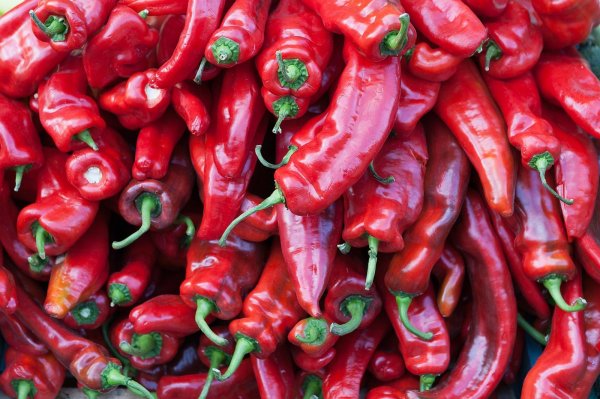prasad1
Active member

Chili peppers have been a part of the human diet in the Americas since at least 7500 BCE. The most recent research shows that chili peppers were domesticated more than 6000 years ago in Mexico, in the region that extends across southern Puebla and northern Oaxaca to southeastern Veracruz, and were one of the first self-pollinating crops cultivated in Mexico, Central and parts of South America.
Peru is considered the country with the highest cultivated Capsicum diversity because it is a center of diversification where varieties of all five domesticates were introduced, grown, and consumed in pre-Columbian times. Bolivia is considered to be the country where the largest diversity of wild Capsicum peppers are consumed. Bolivian consumers distinguish two basic forms: ulupicas, species with small round fruits including C. eximium, C. cardenasii, C. eshbaughii, and C. caballeroi landraces; and arivivis with small elongated fruits including C. baccatum var. baccatum and C. chacoense varieties.
Christopher Columbus (His yet another folly) was one of the first Europeans to encounter them (in the Caribbean), and called them "peppers" because they, like black pepper of the Piper genus known in Europe, have a spicy, hot taste unlike other foodstuffs. Upon their introduction into Europe, chilies were grown as botanical curiosities in the gardens of Spanish and Portuguese monasteries. Christian monks experimented with the culinary potential of chili and discovered that their pungency offered a substitute for black peppercorns.
Chilies were cultivated around the globe after Indigenous people shared them with travelers. Diego Álvarez Chanca, a physician on Columbus' second voyage to the West Indies in 1493, brought the first chili peppers to Spain and first wrote about their medicinal effects in 1494.
The spread of chili peppers to Asia was most likely a natural consequence of its introduction to Portuguese traders (Lisbon was a common port of call for Spanish ships sailing to and from the Americas) who, aware of its trade value, would have likely promoted its commerce in the Asian spice trade routes then dominated by Portuguese and Arab traders. It was introduced in India by the Portuguese towards the end of 15th century. Today chilies are an integral part of South Asian and Southeast Asian cuisines.
The chili pepper features heavily in the cuisine of the Goan region of India, which was the site of a Portuguese colony (e.g., vindaloo, an Indian interpretation of a Portuguese dish). Chili peppers journeyed from India, through Central Asia and Turkey, to Hungary, where they became the national spice in the form of paprika.
https://en.wikipedia.org/wiki/Chili_pepper
How did it become so integrated with Indian cooking?
Last edited:
